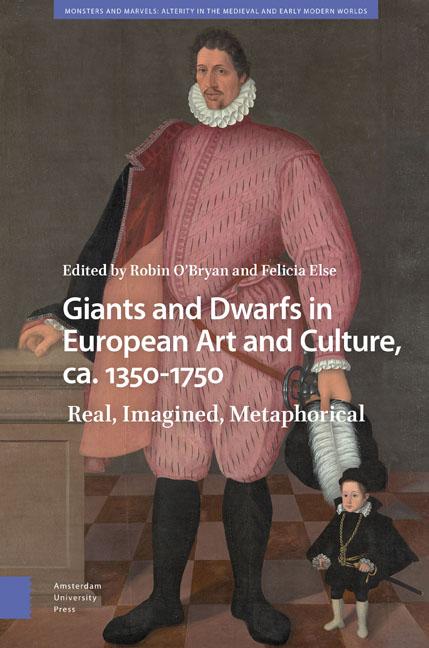1 - Out of Scale: Naming and Identity of Late Medieval Giants
Published online by Cambridge University Press: 13 April 2024
Summary
Abstract
Six colossal figures of giants and giantesses, anti-heroes of Arthurian romances, welcome visitors entering the guest rooms of the Summer House at Schloss Runkelstein. Although named after specific giants, the visual properties and attributes of the figures suggested a different identity to late medieval viewers. While described in the texts as repulsive and evil, in the frescoes they appear as symbols of bravery and virtue. Being executed “out of scale,” unable to be fully grasped somatically by the viewer, they were both physically and ethically abject but also magnificent. This essay explores the discrepancy between the giants’ identity and the somatic experience of the gigantic, duly suggesting that the giants may have functioned as a metaphor for the work's commissioners.
Keywords: Schloss Runkelstein, giantesses, Arthurian literature, Middle High German literature, somaticism, scaling
In the wrathful vision of St. Gregory the Great, giants are denied salvation and will neither be resurrected nor gain salvation at the End of Times. Characterized by the sins of pride and arrogance, they resemble demons striving against God. Their transgressive character is manifested in their exaggerated size and physical excess, which together signal a surfeit of sexuality and violence, as well as immorality. Consequently, they were perceived as doomed, to be obliterated. In spite of this negative perception, giants became objects of fascination and even admiration in the late medieval culture. They occupied a central role in numerous Middle High German epics, romances, and farces, and their images adorned both sacred and lay public spheres, including church sanctuaries, external town walls, marketplaces, fountains, harbors, river banks, and even private dwellings. In Middle High German literature, giants were attributed a specific origin: the Land im Gebirge—land in the mountains—a label that refers to South Tyrol and the area around the Elbe River, which crosses the Giant Mountains (Krkonoše Mountains/Riesengebirge), particularly the region around the German/ Silesian border. Little wonder then, that between the fourteenth and the sixteenth centuries, colossal representations of mythological, biblical, and epic giants dominated the landscape of the German-speaking regions.
- Type
- Chapter
- Information
- Giants and Dwarfs in European Art and Culture, c. 1350-1750Real, Imagined, Metaphorical, pp. 69 - 94Publisher: Amsterdam University PressPrint publication year: 2024



